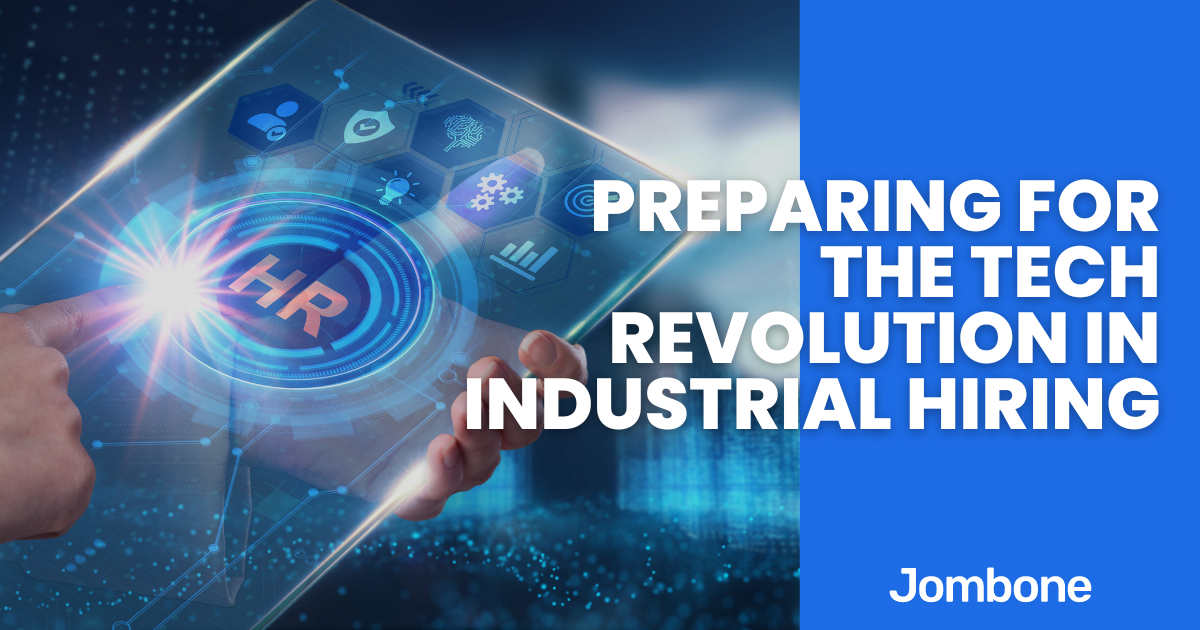The fast-paced growth of technology shows no signs of abating, and its impact on various industries is becoming increasingly profound.
Over the last four to five years, especially during COVID-19, we have witnessed accelerated technological advancements, revolutionizing how we live and work. Innovations from artificial intelligence and automation to robotics and machine learning are reshaping entire industries, economies, and the nature of employment itself.
We are standing at the cusp of a transformative era. While technological advancements promise increased convenience, improved quality, and reduced costs in numerous sectors, they threaten the status quo in many ways, most notably employment. So, what does this mean for blue-collar jobs?
Technological Evolution
While the transition towards automation and digitization will undoubtedly reshape the workforce, many experts believe certain jobs will evolve, becoming more efficient rather than disappearing entirely.
In its report titled “Gartner Top Strategic Technology Trends 2023“, the leading research and advisory firm identifies emerging technological trends that are anticipated to shape the business and employment landscape in the coming years. Some of its findings are:
- Composable Business: A concept that emphasizes the need for organizations to be agile and adaptable to respond effectively to changing market dynamics. It explores the role of composability in enabling organizations to build flexible systems and leverage modular capabilities for improved business outcomes.
- Digital Humanism: With a focus on placing humans at the center of technological advancements, it emphasizes the importance of ethics, trust, inclusivity, and privacy in developing and deploying technology solutions.
- Algorithmic Trust: Explores the use of advanced technologies such as blockchain and distributed ledger systems to establish trust and transparency in digital interactions.
- Immersive Experiences: Augmented Reality (AR) and Virtual Reality (VR) will transform customer interactions and enhance employee productivity. It explores the potential of these technologies in areas such as training, remote collaboration, and enhancing customer experiences.
- Hyper Automation: Leveraging artificial intelligence and machine learning to automate complex processes.
- Internet of Behaviors (IoB): Using data and analytics to influence human behavior and the fusion of privacy and security. IoB emphasizes organizations’ need to prioritize privacy and security measures in an increasingly connected world.
An obvious takeaway from this is that automation and AI will continue to rewrite the rules of business and employment, and that businesses will have be intentional and deliberate in developing humanist protocols that empower workers to succeed in this new age.
Investing in People to Keep Up with Machines
The rapid pace of technological innovation has caught the world off guard, highlighting the need for industries to catch up with and adapt to the changing landscape. In order to keep pace with this relentless progress, companies across many sectors will need to prioritize enhancing the capabilities of their workforce.
Investing in human capital and upskilling employees will be a key contributing factor in this decade, enabling industries to harness the full potential of emerging technologies while preserving existing jobs and creating new ones. Certainly, some jobs will change dramatically.
The gradual replacement of blue-collar jobs involving manual labor with automation is a significant trend reshaping industries. That said, it’s interesting to note that AI is eliminating a portion of white-collar jobs, creating growth and demand for blue-collar positions.
It’s crucial to recognize that these blue-collar jobs will not simply vanish or disappear; they will transform. Automation technologies will take over repetitive and physically demanding tasks, allowing human workers to focus on more complex and cognitive aspects of their jobs. This shift will result in a reimagining of the workforce rather than its elimination.
Evolution is Constant
Our world is constantly evolving, and technological advancements are driving this change. The priorities, expectations, and living styles of individuals are evolving alongside these technological developments. From our time as hunter-gatherers to agrarian society to the first industrial revolution and beyond, the nature of employment has constantly changed, and how we live has changed along with it.
While automation may reduce the number of manual labor positions, it will also create new opportunities. As industries adapt to automation, the demand for skilled workers who can oversee, maintain, and innovate these technologies will rise. Therefore, it is clear that companies must upskill the workforce to ensure they have the talent they’ll need to thrive in this changing landscape.
Change is Inevitable
Ultimately, our world constantly changes, and we must change with it. Automation has the potential to free up human ability and creativity and allow for a more innovative and prosperous society. It also has the potential to throw a lot of people out of work. If we are to embrace these technological changes, we must adapt to new ways of working and invest in education and training programs to equip individuals with the skills needed for the jobs of the future.
In this rapidly changing world, businesses that adopt a forward-thinking mindset and invest in upskilling their workforce will position themselves for greater success in the future. Just as embracing new methods, business models, and techniques to improve efficiencies is essential for staying competitive in the evolving landscape, so is a well-trained workforce.
Seizing the Opportunity
By leveraging digital advancements, businesses can unlock new avenues for growth and gain a competitive edge in the market. Companies should seize the opportunities presented by automation, artificial intelligence, and other emerging technologies to streamline operations, enhance productivity, and deliver innovative products and services.
But the rush to embrace modern technology should be tempered with the wisdom to enable our blue-collar workforce to share in the rewards – it is crucial to foster a culture of continuous learning and adaptability, encouraging employees to embrace change and acquire new skills that align with the evolving demands of the digital era.
To accomplish this, companies should actively explore partnerships and collaborations with educational institutions, technology providers, and start-ups to identify strategies to help workers stay at the forefront of innovation. By embracing the possibilities of technology and adopting a proactive approach to the digital transformation of blue-collar employment, businesses can position themselves and their workers for success.

